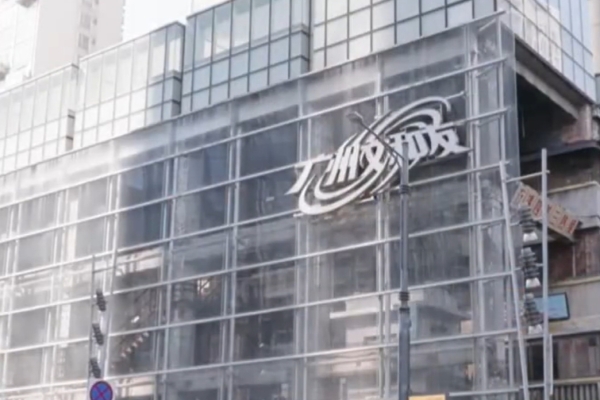Recently, the once bustling Chinese restaurant “Guangzhou Wenheyu” has been found dismantling its sign and closing its doors. From being a hot spot to gradually fading away, Guangzhou Wenheyu has been in business for less than 5 years.
According to reports from the Guangzhou media, after closing for the Chinese New Year, Guangzhou Wenheyu has remained closed and it has been observed that the establishment is currently dismantling its sign and closing down.
Reported by Xin Kuai Bao, located at Huifang, 75 Tiyu Dong Road, Guangzhou Wenheyu still has a “closed” sign at the entrance, with red fences blocking entry. However, a small truck is parked in front, workers are seen loading boxes of cooking oil onto the truck. When asked about when they will reopen after the Chinese New Year and if they are dismantling and closing down, the workers coordinating the loading process simply responded with “waiting for company instructions.”
On the Dianping App, the latest review for Guangzhou Wenheyu is dated February 8th, with a user commenting “came here specifically to check in, but it’s still closed on-site.”
In January this year, while Guangzhou Wenheyu was still in operation, a comment mentioned: “Guangzhou Wenheyu is near Taikoo Hui, we went to check it out, but it was really deserted. I thought Shenzhen Wenheyu was quiet, but compared to that, Guangzhou Wenheyu is even more desolate. It was Saturday dinner time, there were still fewer customers than there were staff in Wenheyu, it was truly sad, so I went in to take a few photos and quickly left.”
In July last year, rumors circulated about the closure of Guangzhou Wenheyu when the renovation announcement for the Commercial Huifang at the northeast side of Taikoo Hui in Guangzhou was released. In the post-renovation renderings, the iconic signage of the popular restaurant “Guangzhou Wenheyu” was nowhere to be seen.
It is reported that Huifang is a commercial building with an area of approximately 0.84 million square meters located in the northeast side of Taikoo Hui in Guangzhou, owned wholly by Taikoo Properties. The renovation plans include adding a 24-hour pedestrian overpass and transforming the city’s common corridor and facade. By the end of last year, the renovation application for the building where Guangzhou Wenheyu was situated had obtained planning approval and was in the “post-announcement” stage.
Aside from Guangzhou Wenheyu announcing “closed for the Chinese New Year”, other stores in the Huifang such as Ludingji, Xicha, and Yu Lan Vietnamese Beef Noodle have also closed down.
In 2020, Wenheyu opened its doors at Huifang with an investment cost reaching 200 million RMB.
During its early days of operation, Guangzhou Wenheyu was once very popular, with long queues of up to 3,000 people daily. However, its popularity rapidly declined, with many well-known establishments subsequently pulling out, and even the last-standing Chen Tianji Yushi closed its doors before this year’s Chinese New Year.
Guangzhou Wenheyu was a large commercial complex that combined dining, culture, and entertainment, with a theme centered around street culture, local snacks, and nostalgic vibes.
Despite its aspiration to become the “Disneyland of the Chinese catering industry,” challenges faced during operation and changes in the market environment have led to closures or adjustments in various locations.
Similar to Guangzhou Wenheyu, Shenzhen Wenheyu, which opened in 2021, also faced a significant loss in customer flow after the early stages of opening. By the end of 2023, many merchants in Shenzhen Wenheyu went through a major turnover, replacing various Guangdong-style dining establishments with a group of popular local Hunan dining brands. However, the popularity dwindled significantly, with the number of businesses decreasing from the hundreds at the opening to just 11 establishments.
An article from the official account of the travel agency Brand Orange Travel, certified as the Brand Orange Travel official account, mentioned that in the era of consumption downgrade, when customers are unwilling to pay premium prices, the cost of creating scenes becomes a high expense, ultimately leading to the closure or failure of restaurants and venues.

